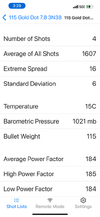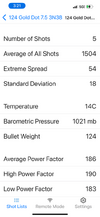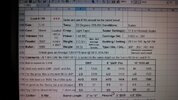I agree and started building 9mm PCCs during the "Great Component Shortage" of 2013 when 22LR exceeded $5-$6/50 rounds and decided to shoot 9mm PCCs instead as I could reload for around same cost (Which was way cheaper than reloading .223 for same manual of arms practice of AR15s). PCCs with almost .357 Mag level loads would be better than best 22LR load with 30/33 round capacity magazine for defensive purposes that is lighter/easier handling than AR15 and lower cost of reloading allows for more practice.
I found load development for 9mm carbine different from the usual load development due to PCC's "
blowback action" compared to "
locked breech action". With blowback action, case mouth is held against the chamber by recoil spring tension and combined weight of bolt/buffer. How long case mouth is held against chamber before moving back to start leaking gas to decrease chamber pressure I call "dwell time".
Headspacing -
Sorting mixed range brass by longer resized length to headspace off case mouth applies here as shorter resized cases will headspace/held by extractor and case mouth being away from chamber/dangling will leak more gas to produce more soot on case and decrease accuracy. (With locked breech action, shorter resized brass has less affect on accuracy as breech wall face will limit case rim movement back to maintain pressure build)
Dwell time and powder burn rate - I tested various powders from faster burning Red Dot/Promo to slower burning BE-86 and found slower burning powder loads produced more soot on case. But faster burning than W231/HP-38 powder loads produced less soot on case (Indicating more efficient/complete powder burn during dwell time) and greater accuracy (Scroll down for powder selection for PCC) -
https://www.thehighroad.org/index.p...-and-discussions.778197/page-11#post-12415502
2021 USPSA survey showing faster burning powders used for PCC/3-gun match loads was no surprise as match shooters using blowback action PCCs probably found the same thing about burn rate vs dwell time of bolt/case mouth/neck in contact with chamber before gas leaked and pressure dropped from bolt/buffer moving back.
Bullet drop and vertical dispersion/scatter - Even at 50 yards and especially at 100 yards, bullet drop and vertical dispersion becomes a factor to increase group size. Add the tolerance stacking of gas leakage/inconsistent pressure build that could produce more inconsistent muzzle velocity and you will see greater effects of bullet drop as expressed by vertical dispersion/scatter of group size. So to produce smaller groups at 50/100 yards, more consistent muzzle velocity/lowest SD number loads will produce smaller groups. And especially for 100 yard groups, lighter/flatter trajectory loads will produce less vertical dispersion.
PCC loads really should be tested at 50-75-100 yards as 25 yard groups may not provide much information. Testing PCC loads at 25 yards would be like testing pistol loads at 5-7 yards because everything will produce around 1" group (At 10-15-25 yards, pistol groups opening to 2"-3" will provide better information as to which bullet/powder/OAL combination produces better accuracy).
I found (despite what some may post on the internet forums) more accurate average 50 yard groups to be around 1.5"+ and 3"+ at 100 yards which is on par with various magazine reviews/testing of Just Right carbine groups at 50 yards (With 1:16 twist barrel that produced slightly greater accuracy than more common 1:10 twist barrels for different bullet types ... Consider most match pistol barrels are 1:16) - (
American Rifleman 25 yard testing) 50 yard testing -
https://www.thetruthaboutguns.com/gun-review-jr-carbine/
1:10 twist rate PSA vs 1:16 twist rate JR carbine comparison
We have discussed effects of bullet going transonic to wobble/tumble several times and during my thousands of round carbine load chrono and 50-100 yard testing, I really did not see evidence of bullet tumbling as all the holes on target were round without pronounced elongation (See 100 yard group below).
Here's sample of my chrono testing showing average velocities with faster/lighter 100 gr Promo load producing
very low velocity spread of 13-16 fps -
https://www.thehighroad.org/index.p...n-9mm-40s-w-45acp.799231/page-4#post-10338994
- 100 gr RMR HM RN 4.5-4.7 gr Promo @ 1.050": 1478-1475-1480-1471-1467 fps (58 F - JR carbine)
- 100 gr RMR HM RN 4.5-4.7 gr Promo @ 1.050": 1458-1450-1445-1442-1448 fps (71 F - JR carbine)
50 yard 10 shot groups with higher velocity/flatter shooting lighter 100 gr loads. Heavier 115/124 gr loads produced larger groups.
100 yard 10 shot group showing vertical dispersion/elongation of group (I know, I know ... the usual pulling of trigger to induce "flyers" ... I got Timney/Trigger Tech triggers to install on my bench test rigs for 9mm PCC and .223 AR ... stay tuned).




